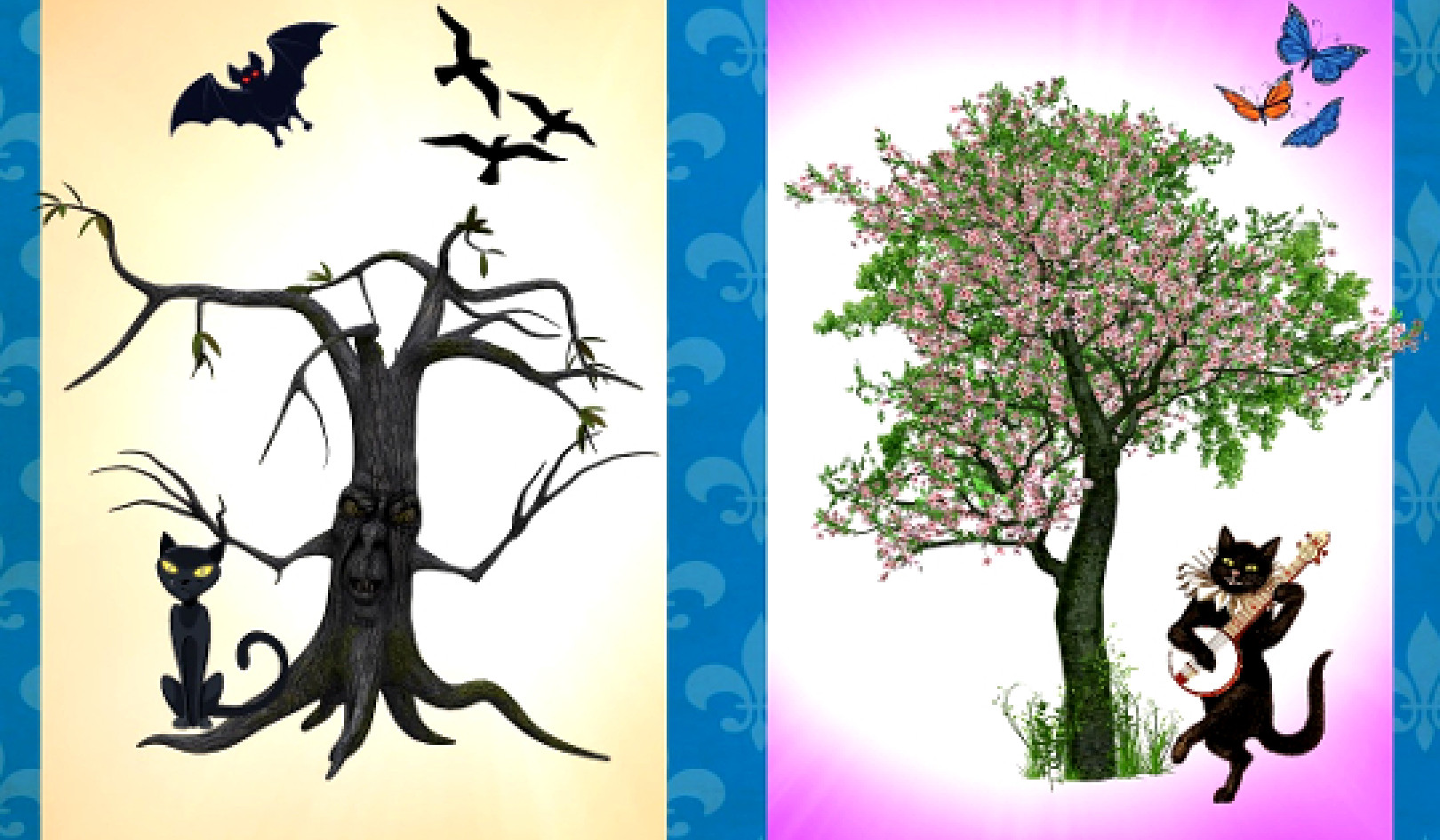
Image by ???????? ??????????
A great deal of research has been done in an effort to understand the structures and processes that are necessary for vision. What is obvious is that each eye feeds specific information through the visual pathways to the two sides of the brain. The further the light impressions travel back into the layers of the brain, the more our visual perceptions become integrated with our understanding of ourselves and the world around us.
Our visual anatomy and physiology are constructed in such a way as to facilitate this process of integration. The ability to fully integrate our awareness of our surroundings with an awareness of self is unquestionably a desired state. This integrative process is the basis for oneness, for wholeness, for a feeling of being connected to all the parts of one's self.
In a state of integration we are able to reach beyond ourselves and connect consciously with the world through our senses. In the case of vision, we are better able to discern reality through the eyes. The more we know ourselves inside the more our eyes reveal the truth of what we perceive. You are able to discern the difference, for example, between the objective material you are receiving through your eyes and the thoughts and feelings you may be associating with that material through your mind.
Combining Looking and Seeing, Left Brain, Right Brain
The combination of looking and seeing is used to construct our vision of ourselves during our formative years. This also translates well to the way we see outside ourselves -- to the formation of our individualized perceptions of the world. Light travels into each eye. As light travels into each eye, the visual system harmonizes the looking and seeing from each of our two eyes, allowing us to perceive that information as a unified image.
In scientific terms we call this "fusion." The information from the left eye and the right eye fuses and blends. When this happens the result is greater than simply adding one piece of information to another. One plus one no longer adds up to two. More than likely, the end result of fusion is three or even five.
Fusion provides our awareness of an image with a sense of wholeness, which is much bigger than the sum of its individual parts. The process of fusion is comparable to a good relationship. Two well-adjusted people get together and combine their talents and skills. The combination results in a state of being that is much richer than either person would have standing alone.
One of the assets of integration and fusion is stereoscopic depth perception, that is, seeing in three-dimensions rather than just seeing a flat surface. In purely physical terms, this is important for perceiving and judging distance, a way of seeing that is particularly obvious when you drive your car or participate in sports.
In conscious seeing we study this perception of depth from the inside; we explore the level at which it is occurring in our minds. Seeing with depth allows us to experience our own knowing and how that knowing is linked to everything outside us. This whole process of becoming aware of the inner workings of our minds and how it affects and is affected by the external world is what we generally refer to as "consciousness."
Compensating for a Lack of Seeing Skills
Let's return to our earlier question about why looking has become such an overused phenomenon in our culture. Usually when we exaggerate a behavior, such as looking, it is because we are lacking in some skill related to that behavior. My research reveals that over-looking is an attempt to compensate for a lack of seeing skills. What is lacking? If you cannot access your foveal vision, then your eyesight without eyeglasses -- what I call naked vision -- is unclear. The images you perceive are blurred. When your vision of the outside world is blurred, it may be that you have not focused accurately and clearly on one aspect of your inner nature.
Let's explore this concept one step at a time: The blur you experience is not just a matter of the lens of the eye malfunctioning but is often found to be related to an unresolved emotional issue in your life. If you don't address the inner blur, then it's likely you will continue to mirror that blur in your view of the outside world. Your looking may be out of balance with your seeing. If you wear eyeglasses in an effort to correct the blur, the over emphasis on looking is likely to be even more exaggerated.
If you are over-looking visually, chances are quite good that you are also overlooking your feelings. When you block your feelings a part of you becomes unconscious. That part of you is an important element of your true nature that needs to wake up. Often this overlooked element is related to a part of your history in which you were emotionally wounded. At the time this early wounding occurred, you may not have been intellectually skilled enough or emotionally prepared to deal with the intensity of what was happening. As a result, you may have had to block those troubling events from your conscious awareness in order to go on with your life.
Two Sides of the Brain, Two Personalities
In his book Of Two Minds, Frederic Schiffer, a psychiatrist on the faculty of Harvard Medical School, describes how "each side of our brain possesses an autonomous, distinct personality with its own set of memories, motivations and behaviors." A troubling memory may be held in a small area of one hemisphere of the brain. In our everyday, non-feeling state, the trauma may remain dormant and unseen, rather like the blur we discussed earlier. Schiffer helps his patients awaken and release the memories of these past traumas by using a special form of visual stimulation employing goggles with various forms of patching while the eyes remain partially covered. As a result, the patients often experience a greater sense of well-being.
Some time ago I conducted a study of nearsighted patients who were accustomed to wearing corrective eyeglasses. I measured the degree of fusion ("integration") between the two eyes while the patients were wearing their prescription lenses. The lenses that gave them excellent visual acuity, as measured on the eye chart, actually interfered with the fusion. Compensating for the blur with a lens caused the two foveae to behave as an unhappy couple, "disintegrating" the partnership that might have otherwise allowed them to perceive stereoscopically. The lenses created a fight between the two foveae. Focusing the light sharply on each fovea actually seemed to prevent the two eyes from working together, inhibiting their natural tendency toward integration. Why? I didn't understand the reason until several years later.
Glasses Blur our Awareness of our Feelings
When light enters a normal, healthy, naked eye, a portion of it is focused on the fovea while a more diffuse portion of it bathes the retina. However, when light enters the eye through eyeglasses, the artificial lenses focus it very sharply on the fovea -- for looking -- and dramatically reduce the amount of light that reaches the retina for seeing. As the sharply focused light stimulates the fovea, it also stimulates a particular part of the mind that is the home of thoughts -- the content of your active daily life. But with little light reaching the retina, that part of the brain where feelings reside remains dormant. In the presence of eyeglass-focused light, retinal stimulation is suppressed, feelings are kept buried, and thoughts reign supreme.
To be stuck in our thoughts, lacking feeling, or to blur our awareness of our feelings, is to live our lives unconsciously. Wearing eyeglass lenses creates a false clarity, covering over the blurs of our inner lives. Just as surely as a mask hides the true emotions expressed in the face of its wearer, so the lenses of the eyeglasses produce the illusion that the blurs of our inner lives are not present. As the blurred vision is "corrected" by the lenses, our minds accept the illusion of clarity. The end result in terms of our actual inner experience is the absence of feeling.
Contrariwise, if we pay attention to the blur, the blur itself can guide us inward, so that we may at last see and know the unseen. Retinal seeing challenges us to acknowledge our potential for seeing into the spirit of matter. The spirit of life, the invisible forces of creation, spring into view when we liberate ourselves from the domination of looking.
Thoughts and Foveal Looking
Thoughts and foveal looking are like twin sisters who both love to question and "understand" everything. When we cannot extract information clearly from the world, we seek answers within, abandoning the big picture and our intuitive sense of the world. This is called thinking, which is an ideal way not to remember or see painful experiences that are harbored in the blurs of our consciousness.
In the final analysis, foveal looking turns out to be something like standing on a high hill and peering through a telescope that has a very narrow field of vision; we sharply focus on a single crow perched on a tree branch in the distance and are awed by being able to see it so clearly that we could nearly count its feathers. Meanwhile, we fail to see all that surrounds the crow. The blur of villages, trees, animals grazing in the fields, the hills, housetops, and people working in the fields are all lost to us. We see only the crow and are tricked into believing that's all there is.
©2002, Reprinted with permission of the publisher,
Beyond Words Publishing. http://www.beyondword.com
Article Source:
Conscious Seeing: Transforming Your Life through Your Eyes
by Roberto Kaplan.
 If the eyes are indeed the “windows to the soul,” then there might be a deeper significance to the emergence of an eye problem like nearsightedness than one might think. In Conscious Seeing, Dr. Roberto Kaplan explains that how we see is the largest determining factor in what we see. When we look at our eyes beyond the diagnosis of a problem, we can come to understand that visual symptoms are valuable messages through which we can be more aware of our true nature. An insightful, practical, and holistic approach to eye care, Conscious Seeing gives you the tools to reprogram your consciousness and gain skills for modifying your perception.
If the eyes are indeed the “windows to the soul,” then there might be a deeper significance to the emergence of an eye problem like nearsightedness than one might think. In Conscious Seeing, Dr. Roberto Kaplan explains that how we see is the largest determining factor in what we see. When we look at our eyes beyond the diagnosis of a problem, we can come to understand that visual symptoms are valuable messages through which we can be more aware of our true nature. An insightful, practical, and holistic approach to eye care, Conscious Seeing gives you the tools to reprogram your consciousness and gain skills for modifying your perception.
Info/Order this book. Also available as a Kindle edition.
About the Author
Roberto Kaplan, O.D., M.Ed., is a photographic artist, an internationally known scientist and author, a medical intuitive, and an optometrist who is at the leading edge of twenty-first century health care. Dr. Kaplan holds a doctorate in optometry, a master's in education, and is a Fellow of the College of Optometrists in Vision Development and College of Syntonic Optometry. He is the author of Seeing Without Glasses and The Power Behind Your Eyes.




























